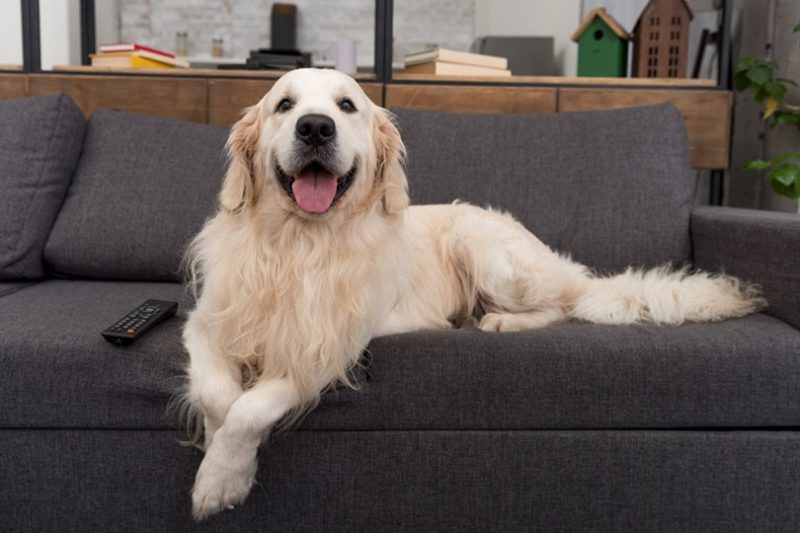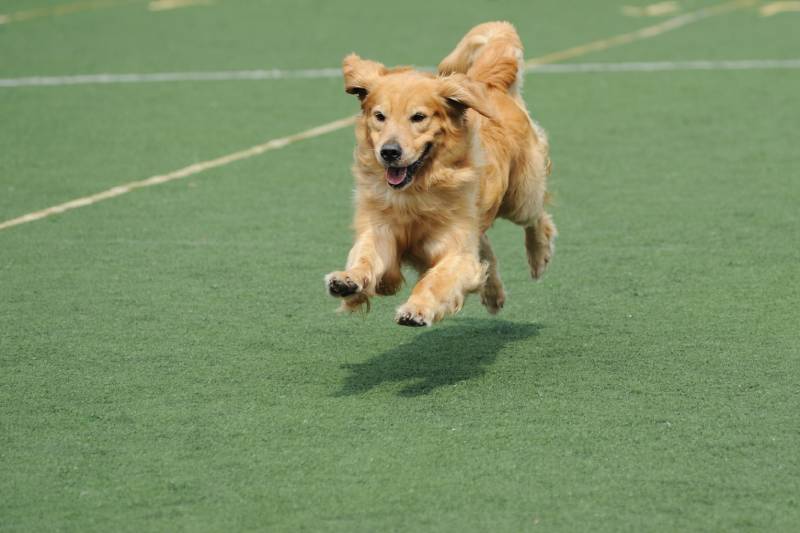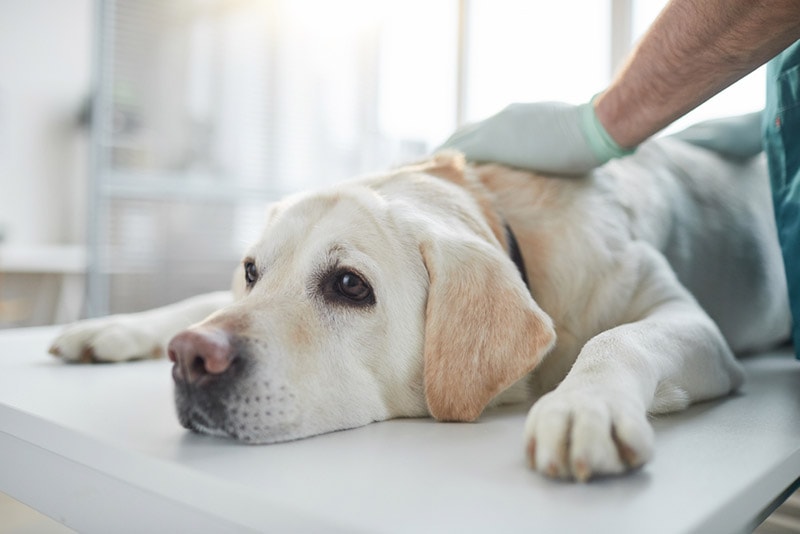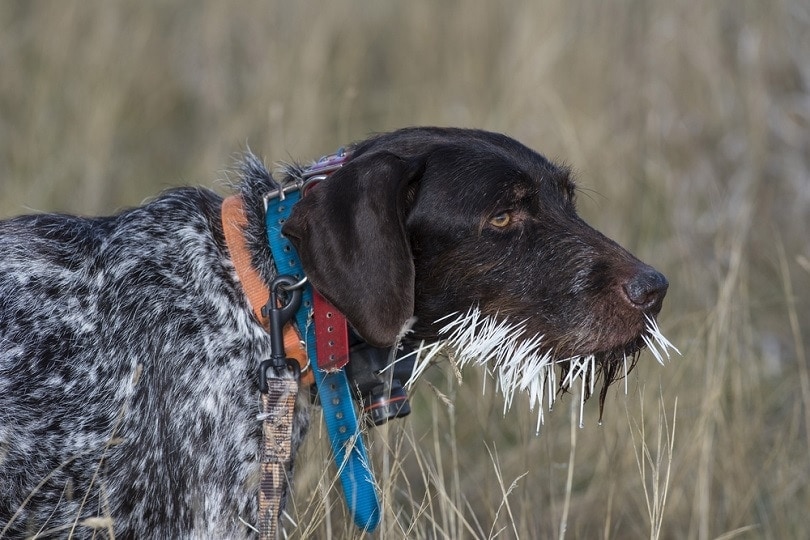Can Golden Retrievers Live in Apartments? Breed Needs & Care Tips
Updated on

Click to Skip Ahead
Apartment dwellers thinking about getting a dog might feel a little limited in their pet choices, especially if your complex has restrictions on the dog breed you can own. For instance, can Golden Retrievers live in apartments? It’s not ideal, but Golden Retrievers can thrive in apartments if you take precautions to make sure they get enough exercise each day and don’t skimp on any other aspect of their care.
That said, Golden Retrievers are a little challenging, especially if you’re a first-time dog owner. Those who already have them and are looking at moving into an apartment shouldn’t fret, but folks already living in apartments might want to check your lease and consider a smaller breed first.
If you’re set on a Golden Retriever and just need tips on how to make things work in your new apartment, we’ve got all that info just down below.
Does Your Apartment Complex Allow Large Dogs?
It’s a sad reality that many apartment complexes today don’t allow tenants to own large breed dogs in their apartments, typically for liability reasons. Specific breeds deemed aggressive by management, like Pitbulls and German Shepherds, may be specifically prohibited, or more commonly, they can choose to limit the weight of your dog. Fifty to 75 pound-maximum weight limits are more broadly applied to any breed, which includes most Golden Retrievers.
Under the umbrella of such a policy, large Golden Retrievers that grow upwards of 60 pounds wouldn’t be feasible. However, in rare instances, you may be able to negotiate with management and get off with a hefty pet deposit/fee.

Tips for Living in an Apartment With a Golden Retriever
If your apartment allows Golden Retrievers, you’re in luck! The trick now is figuring out how to optimize your space and routine for success. Apartment life can be adapted to living with a large active breed, but you’ll have to take things one step at a time, so you don’t get overwhelmed. Let’s wade into some of the best ways you can make apartment life with a Golden Retriever fun and not a chore.
Prioritize Getting Enough Exercise
Golden Retrievers are among the more active large dogs, and boy do they love their playtime. Apartment dwellers need to make an extra effort to get out of the house and keep their best boy or girl active—it’s good for you too! Roughly speaking, the average Golden Retriever should get two or three long, vigorous walks every day, equaling out to about 1.5 to 2 hours each day. Some dogs aren’t that active, especially puppies or seniors who get tuckered out faster, so you can scale down the walks to your dog’s individual energy level.
This is a great opportunity to get acquainted with all the dog-friendly activities and spaces near you. Dog parks and pet-friendly trails showcasing nature’s bounty are perfect places for your dog to get their energy out.

Don’t Skimp on Mental Stimulation Either
Golden Retrievers are very smart pooches that get bored easily, especially in cramped apartments without enough attention or stimulation. They need games, training, and stimulating toys to keep their brains busy and healthy, and to stave off destructive behaviors like chewing—many Golden Retriever owners have woken up missing a shoe.
Set up daily obedience training sessions, which will help boost your dog’s attention span and cognitive skills, like problem-solving. Next, puzzle toys like snuffle mats and Kongs encourage your dog to work to get the food within and are perfect for long stretches alone when you’re at work. Fan-favorite treats to try include yogurt, dog-safe peanut butter, green beans, and sliced apples.
Start Crate Training Early
Crate training is key for keeping your Golden Retriever safe when you can’t be at home with them, like when you’re at work or running errands. Just as important, it helps prevent them from doing any damage to your apartment that could lose you your deposit. Finally, crate training confines any accidents to the crate during the early potty-training stages.
Crate training is notoriously difficult during the puppy stage because your puppy will need to go potty every few hours for several weeks until they develop bladder control. Roughly speaking, your Golden Retriever can “hold it” an hour for every month they are. So, a 3-month-old Golden Retriever can hold their bladder for about 3 hours. We suggest setting an alarm during these early stages to make crate and potty training more manageable.

Set Up Your Space for Success
Limited space is another obstacle in your path, which is why it pays off to have your Golden Retriever in mind when you organize your apartment. Ideally, your dog has a space beside their crate that they can access during your working hours so they’re not always cooped up. This can be a dog-proofed room with their favorite bedding, toys, and maybe a TV if you’re feeling fancy, but Golden Retrievers are pretty laid back while indoors, provided you give them enough exercise.
Consider Your Working Hours
If you work long hours and live in an apartment, you have your work cut out for you. If possible, it helps a ton to hire a dog walker or have a friend/family member walk and feed your dog when you can’t be there with them. If possible, it’s best if someone can be home with your Golden Retriever when they’re a puppy. Older dogs, on the flip side, are typically more settled into a routine and don’t need as much moment-to-moment attention. Do keep in mind that Golden Retrievers are active dogs overall, so they will need plenty of stimulation.

Other Good Dog Breeds for Apartment Life
If you’re looking for a breed that’s compatible with apartment life and all its hurdles, a Golden Retriever isn’t the best by default. They require a lot of exercise or they go stir-crazy, but they’re pretty mellow. Still, some of the breeds we’re about to list below are better suited to apartment life.
- Pugs: Fun-sized and larger than life, the Pug was bred to be a lap dog, and they’re still great at it today.
- French Bulldog: America’s new favorite dog, the gregarious Frenchie has a low-maintenance coat and is happiest wherever you are.
- Bichon Frise: Low-shedding and nearly hypoallergenic, the elegant Bichon Frise is a perfect choice for apartment dwellers looking for a smallish dog built for the task.
Final Thoughts
Apartments aren’t the most pet-friendly places with all their stairs and rules, but tenacious dog owners can make them work for athletic breeds like the Golden Retriever. You’ll simply have to be more purposeful with your routine, space, and exercise.
Featured Image Credit: eva_blanco, Shutterstock













